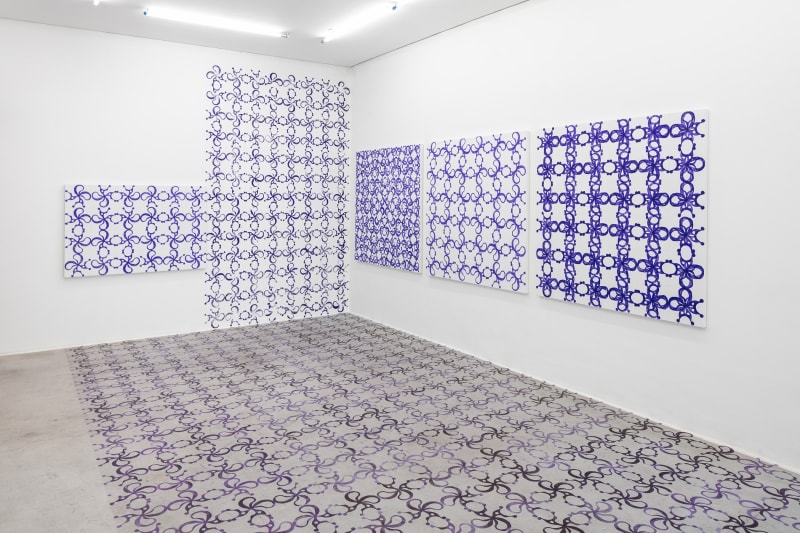To repeat and repeat – until it becomes different.
To repeat is the gift of style.
Manoel De Barros
O livro das ignorãças, 1993
Repetition creates patterns, while also being able to create something new. Isn’t it the advice we give young emerging artists? Redo it, again and again, until it becomes different, until you find the answer. This gesture may seem paradoxical – the “re” prefix evokes repetition, identical iteration. But it can also point to transformation: revision, a new look; rereading, a new interpretation. Sometime the same, sometimes different; sometimes again, sometimes anew. It is within this complex dialectics between replicating and revolutionizing that Cristina Suzuki’s artwork resides.
We are constantly faced with language impasses such as this. The exhibition title in itself, Pattern, can mean many different things in its seven little letters – the average, the ordinary, or the high principles we must attain? Or the repetition of a drawing, of a graphic element? These standard definitions are of no use to use. A thesaurus could help us choose the sense that better suits our interests, even if it goes contradicts the correct semantics. In Suzuki’s artistic production, we can focus rather on its syntax, on the way that she articulates (visual) language. Her works transcend paradoxical and contrary meanings, because art can accommodate the coexistence of absurdity and contradiction, and the beauty lies in how we, as spectators, deal with it.
The artist has always played with language and visuality, creating tension between the usually impervious categories of painting, photography, sculpture etc. In the Imprinting series that she started in 2013, Suzuki created a drawing (like a basic unit) that can be (re)combined in different ways, through various mediums, in multiple proportions and arrangements, infinitely. The patchers resulting from these combinations have been painted on walls, tattooed on skin, have become rubber stamps, paintings, stickers, and can become anything the artists wants them to be. The subtitles for each version emphasize the work’s methodical process, remind us of recipes or instruction manuals, and describe the image they refer to, like the work that greets the gallery visitors on the façade: Figura 1 e Figura 1 espelhada alternadas sobrepostas e centralizadas na vertical e horizontal.
The series Novos e Velhos Clichês para Era Contemporânea (New and Old Clichés for the Contemporary Era) plays with the idea of pattern as an ideal measure, the good old beauty standard. And furthermore: the idea of cliché is already a cliché, clichés are clichés because they are true, and this is a cliché. But the term, in Portuguese, is used to name letterpress printing plates, which is the material that Suzuki used to produce the work. She has collected several (usually offensive) words and expressions that have been made synonyms for certain stereotypes, such as the dumb blonde and the terrorist Muslim, and transformed them into plaques that reveal, beyond figurative meanings, how language can be manipulated so we do not notice how pernicious these common-places are.
Finally, the Coleção de Verão para Panos de Chão (Summer Collection for Floorcloths) brings us a different game. How authentic is it to present us with the image of the object instead of the object itself? In fact, it’s been a long time since authenticity mattered in contemporary art. Could a counterfeiter be considered as much of an artist as the original painter? Does art need to be created by the hands of the artists themselves? We are being constantly deceived by plays of smoke and mirrors that create parallel realities and lead us to question what can be real. What repetition can teach us is that everything that is repeated can also be renewed, and Cristina Suzuki will continue to repeat herself to create something different.
Julia Lima

